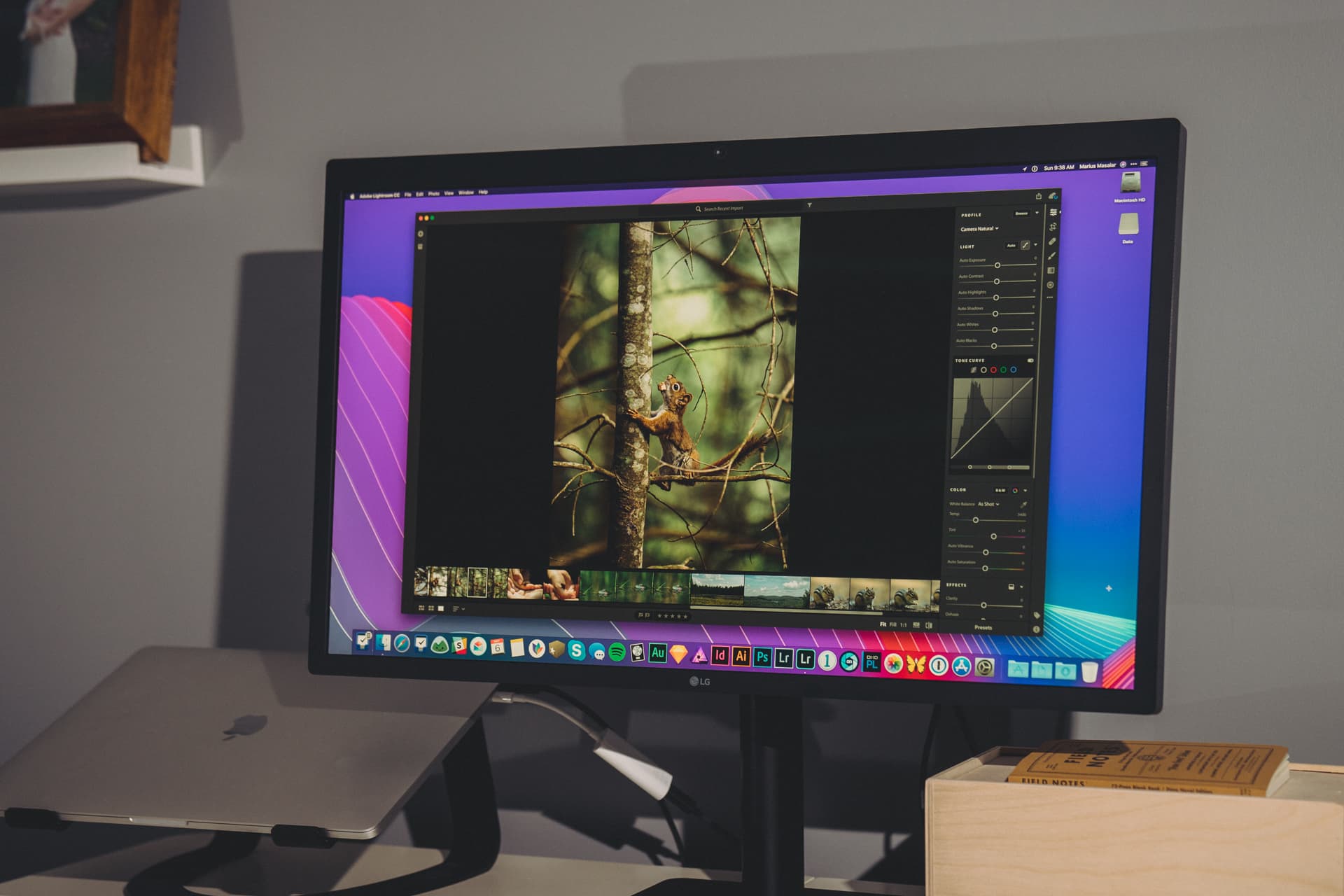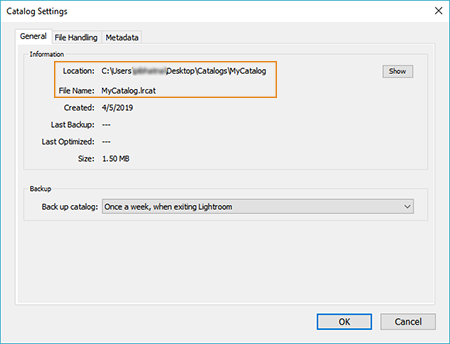Download Adobe Lightroom for macOS 10.14 or later and enjoy it on your Mac. The cloud-based service for people who love photography, Lightroom gives you everything you need to edit, organize, store, and share your photos across desktop, mobile, and web. Download Adobe Lightroom Classic 10 for Mac full version program setup free. Lightroom Classic 10 is a family of image organization and image manipulation software that helps the digital artists in editing, viewing, organizing, importing/saving and sharing large numbers of digital images.
Download Adobe Lightroom Classic 10 for Mac full version program setup free. Lightroom Classic 10 is a family of image organization and image manipulation software that helps the digital artists in editing, viewing, organizing, importing/saving and sharing large numbers of digital images.
Adobe Lightroom Classic 10 for Mac Review

Lightroom Classic 10 is a complex software developed by Adobe for editing and managing raw images. Beginner, hobbyist, and professional photographers and other digital artists use Lightroom Classic to organize and edit their images quickly and effectively. It helps you bring out the best in your photographs, whether you are perfecting one image, searching for ten, processing hundreds, or organizing thousands. You may also like Adobe Lightroom Classic v9.4 for Mac Free Download
It comes with powerful toolkit for editing the digital photos without sacrificing the quality. Using its smart photo editing tools, you can set exposure, brightness and contrast, clarity, vibration, tone curve, HSL, color, split toning, details (sharpening, noise reduction), effects, and camera calibration. Artists can maximize the Details by adding dark shadows or bright highlights and adjusting them.
Removing the red-eye effect and noise from the photo is not a big deal if you are a Lightroom Classic’s user. It also provides the necessary controls for refining white balance, correcting chromatic aberrations, lens and perspective correction as well as intelligent image sharpening that enhances detail without inserting uncanny artifacts. For complex editing, it provides range masking tools to easily select the areas or objects you want to edit based on their color, luminance, or depth.
Another worth mentioning feature is that you can create HDR panos as it empowers you to merge multiple bracketed exposures into multiple HDR photos and then stitch them into a panorama all in one step. All in all, Lightroom Classic 10 is a perfect program for perfecting your digital photos.
Features of Adobe Lightroom Classic 10 for Mac
- A professional program designed to manage and process digital images
- New controlled adjustments for shadows, midtones, and highlights with Color Grading
- Empowers you to scan, focus, and navigate with new Enhanced Zoom
- Got excellent support for new cameras and lenses
- Fully loaded with latest and unique tools for next level extreme photo editing
- Empowers you to punch up colors, make dull-looking shots vibrant, remove distracting objects, and straighten skewed shots
- Provides quick, clean, and non-destructive photo editing
- Gives you control to organize all photos on desktop and share them in a variety of ways
- Enables you to create an ISO adaptive preset from within Lightroom Classic
Technical Details of Adobe Lightroom Classic 10 for Mac
- Software Name: Lightroom Classic 2020
- Software File Name: Adobe-Lightroom-Claccic-v10.dmg
- File Size: 1.34 GB
- Developers: Adobe

System Requirements for Adobe Lightroom Classic 10 for Mac
- macOS 10.13 or later
- 5 GB free HDD
- 8 GB RAM
- Intel Core 2 Duo or higher
Download Adobe Lightroom Classic 10 for macOS Free
Click on the button given below to download Lightroom Classic 10 for macOS setup free. It is a complete offline setup of Adobe Lightroom Classic for Mac with a single click download link.
Today we introduced our brand new Lightroom CC on Mac/Win, and updates to Lightroom Classic CC, Lightroom on iOS and Android, Lightroom.adobe.com, as well as changes to the existing Creative Cloud Photography plan and a new Lightroom CC plan.
Not seeing Lightroom CC in the Creative Cloud desktop app? Sign out and sign back into the Creative Cloud app to refresh available application updates.
What’s the Difference Between Lightroom and Lightroom Classic?

Going forward, the product you’ve known as Lightroom will be rebranded “Lightroom Classic CC”. Why change? We have introduced a new photography service that will now be called “Lightroom CC”. It is designed to be a cloud-based ecosystem of apps that are deeply integrated and work together seamlessly across desktop, mobile, and web. Lightroom Classic CC is designed for desktop-based (file/folder) digital photography workflows. It’s a well-established workflow solution that is distinct and separate from our new cloud-native service. By separating the two products, we’re allowing Lightroom Classic to focus on the strengths of a file/folder based workflow that many of you enjoy today, while Lightroom CC addresses the cloud/mobile-oriented workflow.
What’s New in Lightroom Classic CC
As many of our customers know, Lightroom Classic (originally Lightroom) was born to help you manage your photography workflows and bring your images to life with a fleet of editing capabilities. But while the palette of Lightroom features grew, our performance detracted from these gains. So we took stock of where you were feeling the most performance anxieties, and dedicated this launch primarily to addressing these issues. The concerns that we gathered primarily centered around optimizing Lightroom Classic’s import and editing workflows.
Here are some of the highlights of where we have made gains that we have tested internally and are betting you will see:
- Application launch time
- Preview generation including in Standard, 1:1 and Minimal previews
- Import selection workflow with “Embedded & Sidecar” preview option (tips here)
- Switching between Library and Develop Module
- Moving from photo to photo in the Develop Module
- Responsive brushing
For a complete listing of “What’s New” in Lightroom Classic, click here.
We have also added new tools to make precise color and tone-based selections for Local Adjustments. You can now use the adjustment brush, radial, or graduated filters to define a rough mask, then refine the selection via the new Range Masking options found at the bottom of each Local Adjustment panel. This serves as a nice complement to meet your masking needs with the already existing auto mask feature in place.
Precise Selections with New Range Masking Tools
Check out some best practices here…and some useful video tips here.
While it was no small feat to carve out the foundation of making these performance gains, we know we still have a lot of work ahead. . For instance, we are working to optimize the performance of higher powered processing systems and higher resolution monitors. At the same time, we will continue to provide new image editing features that will help you pack more of a punch in a shorter period of time so that you can focus on what you love to do—taking incredible, awe-inspiring images.

What’s New in the Lightroom CC Ecosystem
Introducing Lightroom CC
The Lightroom CC ecosystem is a cloud-based service with three device-based apps: desktop, mobile and web.
Lightroom CC is designed and built around 3 guiding principles:
- Powerful Yet Simple—Lightroom CC will offer the powerful image editing that you want, while being simple and intuitive to use. Our goal is that it will have everything you need and nothing you don’t.
- Seamless experience across all your devices—Lightroom CC will work the same across desktop, mobile, and web. This allows you to move across your devices without needing to relearn or figure things out. Your photos and edits are all where you’d expect them to be.
- Cloud Based—Everything you do in Lightroom CC is synced to the cloud. This means that you can access and work with your photos from any device (including multiple computers), and can easily share photos with others. All of your photos and all of the work that you do with them will be automatically backed up all the time.
Adobe Lightroom For Mac Desktop Computers
See here for useful video tips, and here for Lightroom CC FAQs.
Lightroom CC on Desktop (Mac/Win)
Lightroom CC on desktop is a completely new app for Mac and Win. Lightroom CC is designed from the ground up to focus on photographers’ needs as they move between their devices and tap into the power of a cloud-based photo workflow.
Lightroom CC features a new interface that makes it easy to organize AND edit from the same streamlined experience. Your original images, edits, and metadata is synced and stored in the Creative Cloud. Once in the cloud, Lightroom CC taps into Adobe Sensei to automatically tag your images for search.
iOS and Android
Lightroom CC on mobile devices got a number of important new features today as well, and fully supports the Lightroom CC ecosystem, while continuing to support Lightroom Classic.
Adobe Lightroom Mac Crack
Along with Lightroom CC on the desktop, both iOS and Android gain the ability to search through all of your synced photos, leveraging the power of Adobe Sensei to automatically tag and keyword your images for you. Now you can find photos you’re looking for by searching for what is in the photos. You can also now add keywords that will sync with all Lightroom CC devices, helping you find images with those specific keywords later. And to help you organize your images, Lightroom CC on both Android and iOS lets you create and manage your albums into folders, making it easier to keep track of all of your albums of photos.
In this release, Lightroom CC on iOS has also been optimized for iOS 11. We’ve added in the ability to import from and export to iOS 11’s Files app, making it possible to access any photo that’s available within Files. On iPads running iOS 11, you can now take advantage of Drag and Drop to import your photos, including raw photos, from any other app directly into Lightroom CC.
On Android, we’ve optimized the app for the latest version of Android OS, Android O. You’ll also now be able to selectively enhance your photos with the Selective Brush. And finally, the app has been optimized for Chromebooks, with a new interface that provides an optimal editing experience for devices with keyboards, as well as trackpads and touch interfaces.
Web
Lightroom CC on the web continues to get more sharing tools, as well as a new Tech Preview.
The new Lightroom CC Gallery lets you add multiple albums to a single page that you can easily share with friends, family, and clients. Any images added into your albums will automatically show up in your gallery, and images will always reflect the latest edits, making it super simple to keep your gallery up to date.
For the past year, Lightroom CC on the web has offered a glimpse of new features and functionality coming to the Lightroom CC ecosystem, and today we’re excited to share yet another glimpse: Best Photos. The Best Photos tech preview stemmed from the desire to pick more quickly the best photos from a group without the long and sometimes monotonous task of sorting through a number of similar photos. Best Photos leverages a number of Adobe Sensei technologies to help automatically identify and group similar photos, pick the best photo from that group, and then select the best photos of each of the groups. This Tech Preview gives you a chance to play with some of the exciting new technologies that our researchers are working on and provide feedback on what you like, what you don’t like, and features that you’re wishing for.
TV
Rounding out the ecosystem, Lightroom for Apple TV was updated with a few new features to help make sharing your Lightroom photos in the comfort of your home even more enjoyable.
This update includes support for the latest tvOS’s dark mode, supports video playback within your albums, and lets you scroll through large collections of images even faster than before.

Lightroom 6
Adobe Lightroom For Mac Free
Lightroom 6 is the last standalone version of Lightroom that can be purchased outside of a Creative Cloud membership. There will not be a Lightroom 7 perpetual offering. Lightroom 6 will remain for sale for an undetermined amount of time, but will no longer be updated with camera support or bug fixes after the end of 2017. Lightroom 6.13 with support for the Nikon D850 will be released on October 26, 2017.